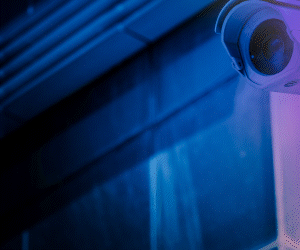Robotic Dogs Operate Autonomously
Given higher education’s increasing challenges in recruiting and retaining IT and public safety employees, Hernandez points out that the dogs also allow institutions to eliminate critical security gaps.
“Assuming a campus police department already has an automated dispatch system, the robot dog could integrate into the existing system,” he says. “The dispatcher can see a dog’s location at any time on the dispatch monitor and view a livestreamed video broadcast as the dog conducts its patrol.”
The dogs can operate autonomously using Geocast, AT&T’s patented set of protocols that implement safety, security and reliability features to provide situational awareness, extend the dogs’ range of operations and augment controls (for instance, by restricting use within particular zones or avoiding collisions). While AT&T does not offer machine learning capabilities today, many ML products can be interfaced with the robots, Hernandez says.
RELATED: What is a STOP grant and how does it apply to higher education?
Robotic Dog Hardware Is Robust and Customizable
Powered by an NVIDIA Xavier CPU/GPU and featuring a 16-channel GMSL2 (Gigabit Multimedia Serial Link) sensor carrier board, the dogs are capable of hosting numerous customizations and applications, which ensure institutions can leverage them however they choose.
They can be equipped with sensors to detect fentanyl or other chemical and biological agents, gases or lethal weapons, Hernandez says. They can also be equipped with technology that allows them to be controlled from anywhere, regardless of the distance between the operator and the dog.
Within the dogs’ mid-body, a sealed, IP67-rated waterproof subassembly integrates NVIDIA and Ghost Robotics’ unmanned ground vehicle mainboard, communications capabilities, global navigation satellite system technology and other electronics.
Their physical construction makes the dogs uniquely suited for patrolling campus perimeters and traversing all types of natural terrain, such as sand, rocks or hills, and human constructions such as stairs, Hernandez adds.
KEEP READING: How Bowie State eliminated security gaps to improve campus safety.
Robotic Dogs Have Applications in Higher Ed Beyond Physical Security
Robot dogs developed by Boston Dynamics have already been deployed at the University of Central Florida and the University at Buffalo in research scenarios studying human and robot interactions, AI and more. In October 2022, Boston Dynamics joined several robotics companies in a pledge to never use robotics as weapons and urged customers that purchase them to pledge the same.
“We are convinced that the benefits for humanity of these technologies strongly outweigh the risk of misuse, and we are excited about a bright future in which humans and robots work side by side to tackle some of the world’s challenges,” the pledge states.











